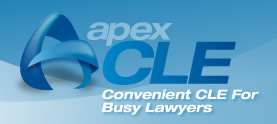Insurance Companies Must Offer Uninsured and Underinsured Motorist Coverage
The Illinois UM statute provides that no policy of liability coverage for an automobile may be issued unless Uninsured motorist coverage is offered in an amount up to the insured’s bodily injury liability limits. In order to satisfy the requirements of this section, an offer of Uninsured motorist coverage must meet a four part test described in Colinger v. National Gen. Ins. Co., 109 Ill.2d 419 (1985). Under Colinger, an offer must (1) notify the insured in a commercially reasonable manner if the offer is not made in face‑to‑face negotiations; (2) specify the limits of the optional coverage without using general terms; (3) intelligibly advise the insured of the nature of the offer; (4) advise the insured that the optional coverage is available for a relatively modest premium increase. Here, the form offered by National Union indicated that the basic limits in Illinois were $30,000. The form also failed to identify the additional cost of the coverage. These errors created a situation as if no offer was made at all. Any purported rejection of this offer was not effective. Since the purported rejection was ineffective, the National Union policy was reformed by the court to reflect a higher UM limit equal to the $2 million liability limit of the policy.In Wood v. National Liability and Fire Ins. Co., 324 Ill.App.3d 583, 755 N.E.2d 1044, 258 Ill.Dec. 225 (2d Dist. 2001), Wood applied for automobile liability coverage and failed to fill out any UM/UIM rejection form. National Liability and Fire Insurance Company issued a policy and then notified the agent that the form was incomplete. The agent then filled the form out on behalf of the insured. Several months later the insured was involved in an automobile accident. The insured sought UM/UIM benefits equal to his liability limit of $350,000. National maintained that the agent completed the rejection form on behalf of Mr. Wood which reduced the limits to $20,000/$40,000.
The court held that the statute clearly requires that the “applicant” fill out the rejection form. The only logical interpretation that can be provided to the statute is that the rejection form must be completed at the time the insured applies for insurance. National argued that the insured filled out the rejection form which modified the policy. The court would have accepted this position if an amended policy had been issued. In Wood, no amended policy was issued and as a result the insured was entitled to UM/UIM coverage equal to his liability limits of $350,000. The court also reviewed whether the rejection of UM/UIM coverage must be made on the “application” or whether it can be completed on a separate document. The court held that a separate UM/UIM rejection form can accompany the application for insurance.
